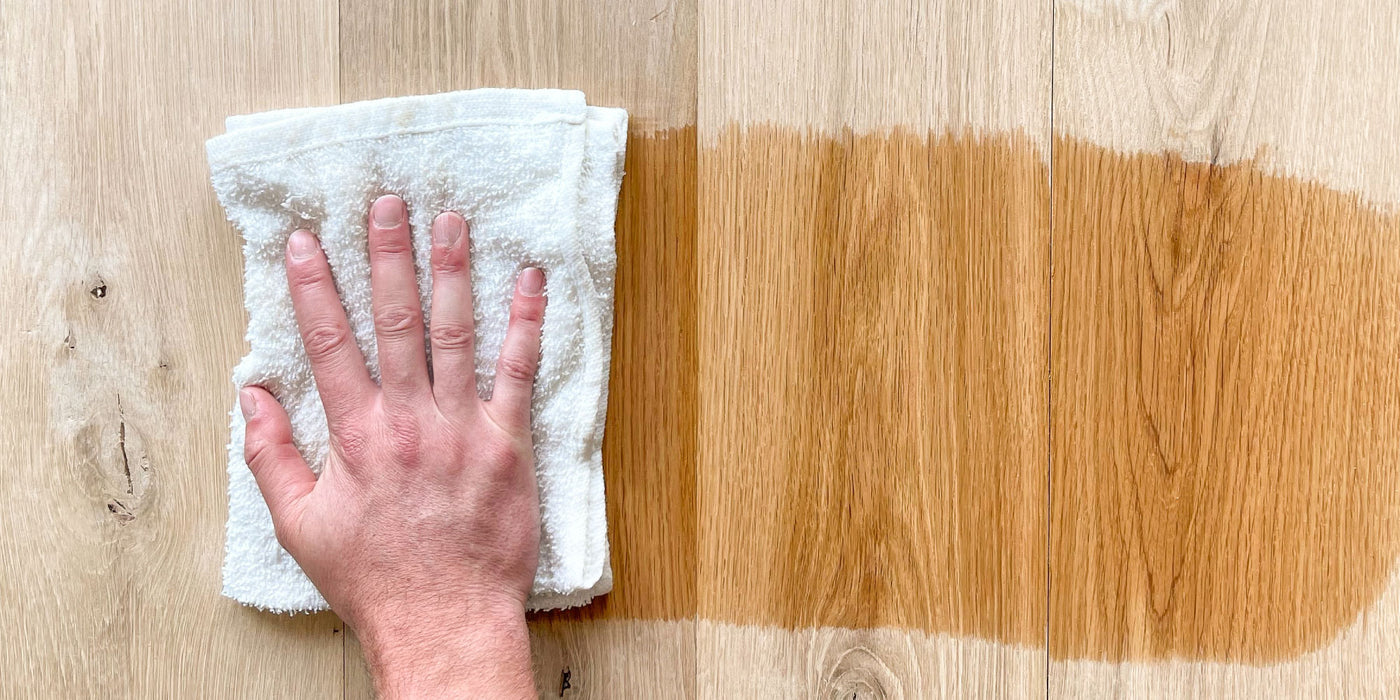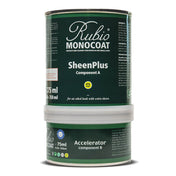Water popping is a straightforward concept, but if you are unfamiliar with it, there are a few key things to be aware of before you dive into it. We will cover what water popping is, why you may want to water pop, and a couple ways to water pop wood surfaces.
What is water popping?
Water popping or grain-popping consists of introducing clean water to an unfinished wood surface to open or "pop" the smooth and closed wood grain. Wood, by its nature, is hygroscopic and absorbs water. As wood absorbs water the wood cells expand (open) and as the water evaporates the expanded cells remain more open.
When to consider water popping?
To understand the need for water popping, we first need to understand the effects of sanding on wood. Wood flooring, or wood used in a furniture build project, typically gets sanded to create a flat, smooth, and blemish-free surface. Often, you start with a course grit sandpaper and go thru progressively finer grits. As you sand to finer grits, the sanding closes the wood grain. Each time the grit is raised, the wood surface becomes smoother, shinier, and the grain becomes more closed.
Now that we understand what is happening on the wood surface, we can discuss some scenarios.
Product penetration
As the product category suggests, when applying a penetrating oil finish, like Rubio Monocoat Oil Plus 2C, the product penetrates the wood grain. If the grain is closed too much, the product cannot penetrate as easily. If the product contains pigment, less product also means less pigment, resulting in a less intense color.
In this scenario, water popping helps to open the wood grain, allowing for more of the oil-based wood finish to penetrate, resulting in a more intense color.
Sanding imperfections
When a wood surface is finish-sanded, some sanding marks may remain on the wood surface. This could be caused by using too course a grit, improper sanding technique, or even damaged sanding tools. The sanding marks, when finished with a pigmented oil-based wood finish like Rubio Monocoat Oil Plus 2C, often get highlighted by the pigment. Obvious, for aesthetic reasons, the visibility of sanding marks (aka sanding swirls or pigtails) is an undesirable situation!
In this scenario, water popping helps to minimize the potential of visible sanding swirls.
Uneven sanding
If the sanding process is rushed or performed unevenly, there is a good chance that the grain is open in varying amounts across the surface, which will result in uneven absorption of the pigment/color of the oil-based wood finish.
In this scenario, water popping helps give a more consistent and even color appearance.
Blotchy appearance
Some wood species like Maple have a very uneven grain and absorb oil-based colors very unevenly, resulting in a blotchy appearance.
In this scenario, water popping helps to reduce the naturally uneven and blotchy appearance in such wood species.
Water popping benefits
To summarize, water popping has the following benefits:
- More intense pigment penetration so you achieve deeper colors.
- Avoids (or reduces) potential for visible sanding swirls.
- More consistent and even color penetration with uneven finish sanding.
- More consistent color penetration on naturally blotchy wood species.

White Oak flooring board rough sanded to 80 grit, to demonstrate the effects of water popping.
How to water pop
First, you need a clean water source. If you are uncertain about the quality of tap water, buy bottled water. When you begin, apply water generously to the wood surface but not excessively or leaving puddles. The goal is to wet the wood surface with water evenly. Evenly is the key word here!
Water is commonly applied to the wood surface by hand or using a sprayer.
Water popping a wood floor
Method 1: Fill a clean bucket with clean water. Dip a sponge or a rag/towel in the water and wet an area of wood evenly. Continue to treat the entire floor this way.
Method 2: Use a Garden Pump-up style sprayer and fill it with clean water, completely pressurize the tank, spray an even mist of water on the wood surface, and immediately go over the sprayed area with a brushing tool, evening out the application of water. A so-called T-Bar outfitted with a waterborne applicator sleeve will do well for that on a wood floor. Continue treating the entire floor in this way.
Whichever method you use, remember to apply water to the entirety of the surface, evenly, and without leaving any puddles. Pay particular attention to not allow water to puddle underneath the baseboards.
Water popping wood furniture or millwork
Method 1: Fill a clean container with clean water. Dip a sponge or a rag in the water and wet the wood.
Method 2: Use a hand sprayer and fill it with clean water, spray an even mist of water to the surface, immediately go over the sprayed area with a brushing tool to even out the application of water. A brush or rag will be fine for that task.
Whichever method you use, remember to apply water to the entirety of the surface, evenly, and without leaving any puddles. Pay particular attention to any edges where water may drip down the side.
Allow to dry
After water popping, allow the wood surface to dry thoroughly; this usually takes between 2-4 hours under favorable drying conditions. Cool temperatures or high relative humidity may lengthen the dry time.
Often, contractors may allow a water popped floor to dry overnight to avoid any potential problem; this is a safer approach. Remember to maintain good air movement through the area to facilitate good drying.
Additional considerations
In the case of wood floors, stay off the water popped floor until applying the wood floor finish (we recommend Rubio Monocoat Oil Plus 2C). With other water popped wood surfaces, do not bump or scuff the surface inadvertently.
Crushing the raised grain of water popped wood will consequently result in less color absorption!
Walk carefully on a water popped wood floor without pivoting on your shoes. You must carefully carry equipment onto the water popped floor to avoid problems with how the color/pigment will take.
Once the surface is water popped, there is no need for additional sanding. If you were to sand the raised grain smooth again, you defeat the intent of the water popping.
When applying Rubio Monocoat Oil Plus 2C on water popped wood, it is recommended to use a thick red pad (which is coarser than a thick white pad). The red pad will help knock down some of the raised grain during the oiling process; and will result in a reasonably smooth surface.


